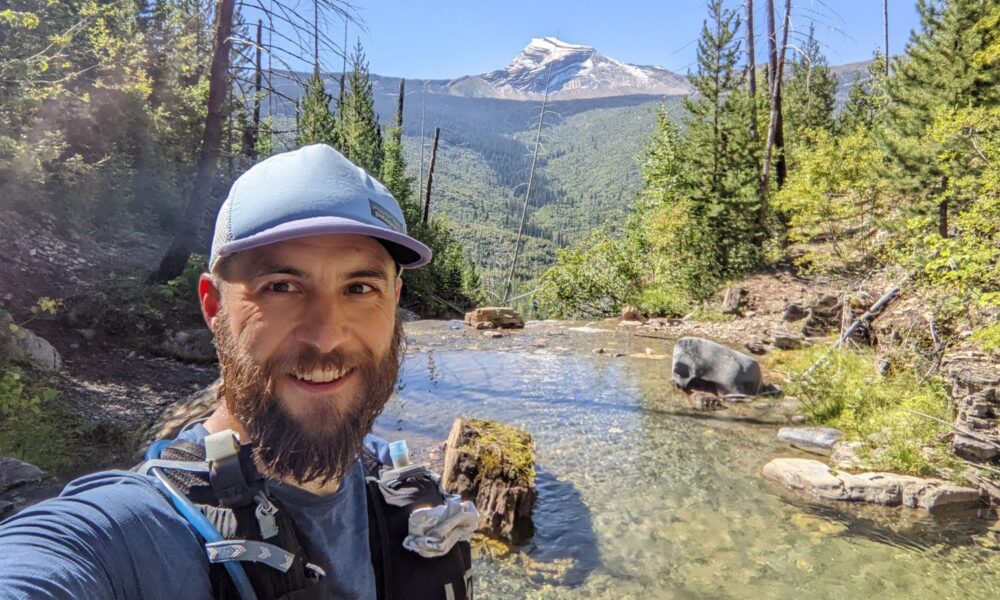In 2022 I visited Glacier National Park for the first time with two close friends. We spent five days backpacking through the backcountry, and I was enthralled by the park’s vastness and beauty and the chance to see glaciers for the first time in my life. While I loved camping out in the wild, as a trail runner I couldn’t help but think of ways to travel lighter, cover more territory, and see even more of this breathtaking landscape. After the trip, I found myself studying maps, plotting potential routes, and, eventually, conceiving an ambitious plan: a 75-mile route linking three of the park’s historic lodges. This route offered restocking points and a bed each night, but each leg of the route was about 25 miles long, with over 4,000 feet of elevation gain.

Having recently read several books on ultramarathon training, I began to incorporate their techniques into my routine. Like any engineer, I created a spreadsheet to plan my training, then booked the trip for Labor Day weekend.
Training presented its own challenges: I live in Madison, Wisconsin—great for many things, but not exactly mountainous. But Wisconsin does offer the Ice Age Trail, a 1,200-mile national scenic trail that winds through the state, tracing the terminal moraine of the North American Ice Sheet—a massive glacier that once covered much of the continent. The trail, characterized by rugged landscapes, narrow technical trails, and sections affectionately called “rollers” for their endless ups and downs, became my go-to training ground. It felt especially fitting to retrace the path of the last major glaciation while preparing to visit some of the last remaining glaciers in the lower 48 states.
In January, about two months into my training, I joined the Union of Concerned Scientists. This marked a career shift toward direct climate and equity advocacy, where I could use my background in electrical engineering to more directly tackle the climate challenges threatening our planet’s critical resources, including the glaciers I would soon visit. The connection felt profound: I was focusing my personal time on training for a chance to witness these glaciers up close, even as I was now working professionally to mitigate the emissions causing their rapid retreat.
Training on glacial terrain
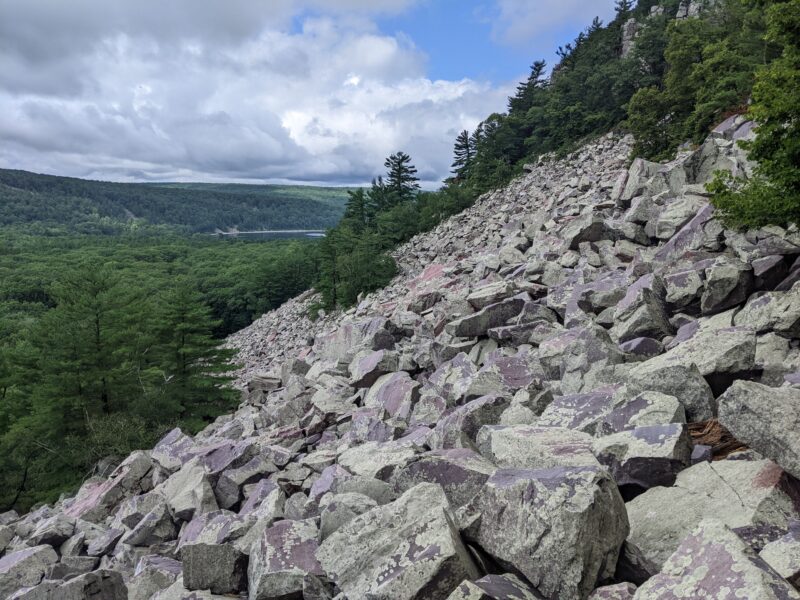
The Ice Age Trail zigzags across Wisconsin, and from where I live in Madison, I can access several segments of the trail within a short drive. During training runs, my thoughts were often practical: monitoring my water supply, fending off bugs, calculating carb intake, etc. But I also reflected on the nature of the landscape I was running across.
The trail gave me a unique perspective on how glaciers not only sculpted the land but also influenced human use of it. The flatter lands on one side became ideal farmland, supporting the dairy industry for which Wisconsin is known, while the rugged driftless terrain on the other side, harder to farm, has lower population densities. Even the Ice Age Trail itself follows the edge of these different land uses, often marking the boundary between neighboring farms.
The glaciation process played out over an incomprehensibly long timescale—the ice age that ended about 10,000 years ago had lasted over 100,000 years. By contrast, the glaciers in Glacier National Park are retreating at a disturbingly rapid pace. Some estimates suggest they could disappear by 2030 due to the climate change triggered by human fossil fuel use, which began less than 200 years ago.
The journey through Glacier: running on borrowed time
Eventually, after logging over 1,000 miles in preparation, it was time to head to the park. For the trip, I was joined by my friend Brian, a fellow runner from Madison. We arrived in Glacier on Thursday afternoon, and with time to spare, booked a boat tour from our starting point at Lake McDonald. Our guide shared insights into the fragility of the landscape, pointing out the shrinking glaciers and evidence of recent forest fires.
Friday morning we set out on six relatively flat miles through thick forest, carpeted in moss and dense with cedars. We hiked this section to avoid startling bears, as Montana has the largest grizzly population in the lower 48. Next, we joined the Going-to-the-Sun Road for six miles, a necessary but unpleasant stretch due to the noise and fumes from traffic (a reminder of the carbon emissions that threaten the very glaciers we had come to see).
After leaving the road, we began the steep ascent up to Swiftcurrent Pass. Despite training on every hill in Wisconsin, we found ourselves unprepared for the altitude. Climbing during the hottest part of the day was grueling, and we began to feel the effects of the altitude. At the pass, we rested and refilled our bottles before descending into the valley, where we finally glimpsed Swiftcurrent Glacier. From a distance it was hard to grasp the scale of the glacier, but as we descended the pass the sights and sounds of immense waterfalls draining the glacial basin helped us understand just how massive it must be.
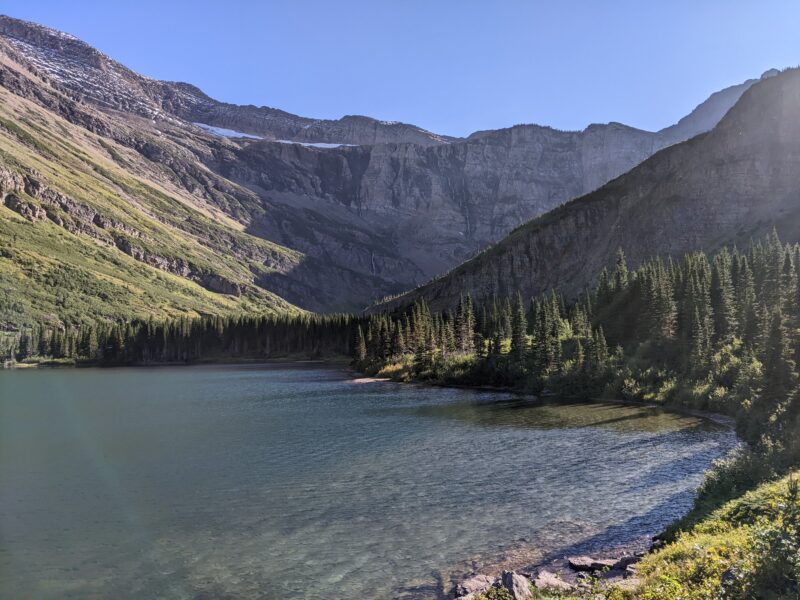
We followed the chain of lakes out of the valley to Swiftcurrent Lodge, where we enjoyed a much-needed rest after a dinner of mac and cheese. We ended up traveling nearly 28 miles that day, the longest day of the trip.
On Saturday we joined the Continental Divide Trail and made our way up to Piegan Pass. We saw only one other hiker all morning, underscoring how remote and isolated we were. As we climbed, the roar of a distant waterfall grew louder, coming in and out of earshot as we switched back up the pass. Near the top, we encountered a snowbank across the trail and carefully made our way over. At the pass, we stopped for lunch, gazing out over snow-fed pools that sparkled in the afternoon sun.
After hearing glowing reviews from other hikers, we decided to take the more challenging Siyeh Pass route, adding another 1,500 feet of elevation gain but allowing us to run through a recent burn area with clear visibility. We covered about 21 miles that day, grateful to avoid vehicle traffic by catching a shuttle for the final few miles along the road.
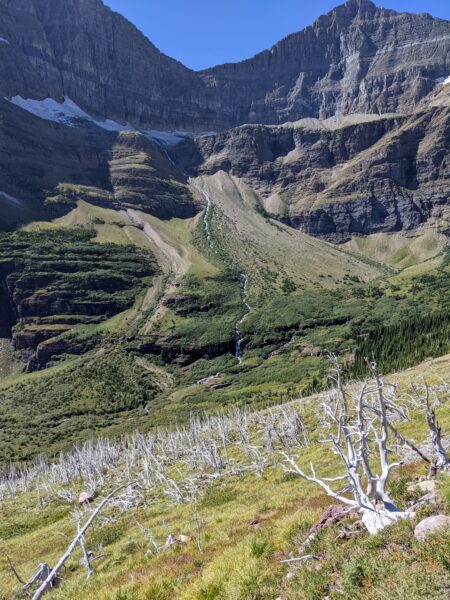
Up close and personal with a glacier
On the morning of day three, we experienced deus ex machina—or more accurately, ursus ex machina: Gunsight Pass, our intended trail for the day and the only path back to our starting point, had been closed by park rangers due to bear activity. We hitched a ride to our final hotel and opted for an out-and-back run up to Sperry Glacier instead—a chance to get closer to the ice than we’d anticipated.
After a 3,500-foot climb, we reached Sperry Chalet and paused for a refreshing lemonade. Another 1,500 feet of climbing led us over Comeau Pass to what we thought would be an easy half mile to the base of Sperry Glacier.
Instead, we were reminded of how glaciers shape the land around them. Sperry Glacier sits on the edge of a large basin which is constantly scraped and scoured by the ice that accumulates each year from snowfall, then melts and sublimates in the warmer season. As a result, the “trail” to the base of the glacier is actually a mostly unmarked traverse across a boulder field. Just a handful of cairns, rebuilt each year by volunteers, mark the path around the ridge that hides the glacier from view.
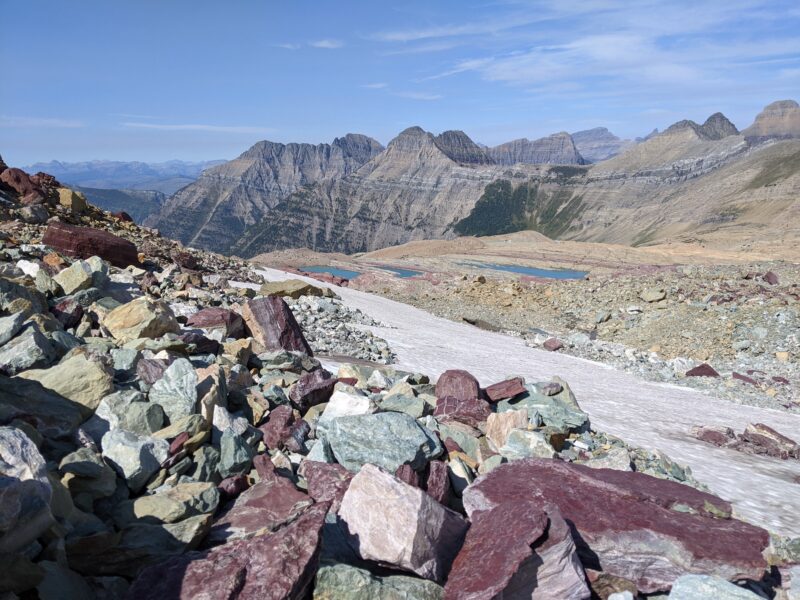
On the other side of the ridge, we were rewarded with spectacular views of crevasses, melt pools, and Sperry Glacier itself. We picked our way over more boulders to reach a US Geological Survey weather station at the base of the glacier. We were completely alone at this point and could hear the constant sound of water dripping from the glacier, and the periodic sound of ice and boulders shifting in the field all around us: the soundtrack of quiet disintegration.
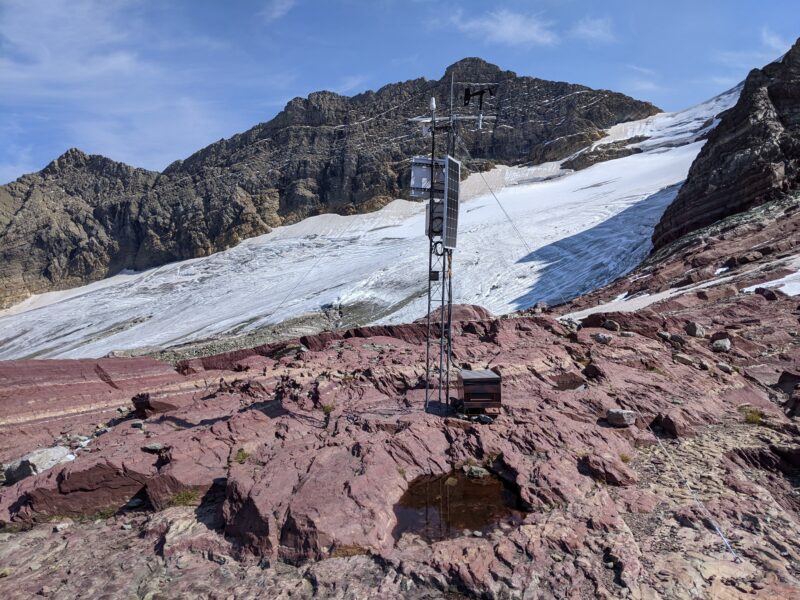
Exhausted but exhilarated, we made our way back, covering a total of just over 20 miles and 5,400 feet of elevation gain—the most intense day of the trip, which we felt made up for the change in course that took five miles off our planned total.
| Day | Mileage | Ascent (feet) | Highest point (feet) | Elapsed time |
| 1 | 27.8 | 4,940 | 7,203 | 10:21 |
| 2 | 20.9 | 3,981 | 8,080 | 7:43 |
| 3 | 20.3 | 5,400 | 8,061 | 8:42 |
| Total | 69.0 | 14,321 | 26:46 |
Reflections on glacier loss and climate action
The weather just before the trip was marked by contrast: a few days earlier, a storm had dropped enough snow to close several miles of road inside the park, but by the time we arrived it had gotten hot enough to melt off nearly all the snow, except for a few lingering piles in the shade at higher elevations. I felt the same contrast as I stood at the foot of Sperry Glacier, feeling both the heat of the sun and the cool breeze blowing over the ice, and I was struck by the reality of the glaciers’ vulnerability.
The prediction that all of the park’s glaciers could be gone by 2030 felt painfully real as we looked out over the landscape. While snow accumulating and disappearing is an annual event as the seasons change, the trend over the last several decades has been a global net reduction in the mass balance of mountain glaciers like Sperry.
The feelings that accompanied this moment were bittersweet; I felt privileged to see something that may be gone in a few short years, but also a sense of guilt that I was seeing something that future generations may be robbed of the opportunity to witness. Glaciers, once thought of as static, timeless icons, have become a fleeting phenomenon, highlighting the urgent need for action on climate change.
The personal meaning of this journey intersected profoundly with my work at the Union of Concerned Scientists. My role focuses on developing solutions for cleaner energy systems and policies to reduce heat-trapping emissions, work that is closely tied to the survival of landscapes like the one I had just run across, as well as the people who inhabit and depend on those landscapes. In Montana and around the world, glaciers support ecosystems, serve as year-round water sources, and regulate the climate, among other important ecological functions. The trip reminded me that the impacts of climate change are not abstract—they are visible, tangible, and current. At home, I train on a landscape shaped by glaciers over a hundred thousand years, but human-caused climate change is re-shaping Glacier National Park within my own lifetime.
Moving forward with purpose
I carry two main insights after running through Glacier: first, the incredible value of experiencing and witnessing these landscapes firsthand; second, the motivation to actively protect and preserve them. My hope is that future generations will be able to visit places like Glacier National Park and stand in awe, as I did, of their beauty and the ancient forces that shaped them. But without meaningful, immediate action, these “icescapes” may not survive to inspire future generations, leaving behind only the evidence of their former grandeur.
This experience changed the way I view both my personal and professional goals. Every mile I ran reminded me of the resilience and adaptability required to face the challenges ahead. It underscored the importance of not only reducing carbon footprints, but actively working to reshape our policies, technologies, and societal structures to build a future where these irreplaceable wonders can endure, and where we can experience them.
As I continue my work with the Union of Concerned Scientists, I’ll carry this journey with me and use it to fuel my dedication to tackling the climate crisis. There’s still hope to protect places like Glacier, but that window of opportunity is narrowing. My experience has reaffirmed that the path forward requires not just awareness, but action—action that can make a difference, just as each small step in my training built toward something greater.
